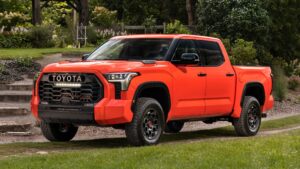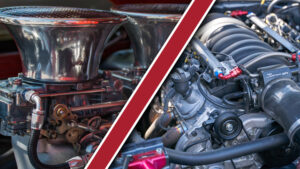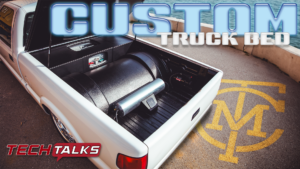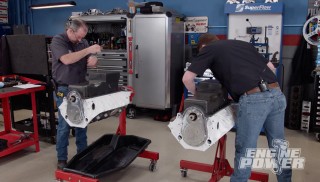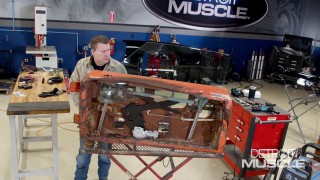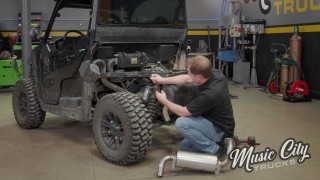Look Tundra Owners, Your Truck Has Problems

Even Toyota’s have problems, contrary to popular belief, or maybe they’re better at hiding them? With the 2022 Tundra set to undergo a complete redesign, Toyota has run on reliability forever, and with two one-million-mile Tundra’s, it’s not too far-fetched.
However, as other auto manufacturers build newer and more advanced products that are, arguably, as reliable and surpass the Tundra in many areas, some interesting information about the truck has emerged. It appears to be mortal and experiences problems like the rest of the competition. It’s not really a big deal, except that Tundra relies solely on reliability.
While some of the issues are isolated to a particular vehicle, others are more widespread and cause some significant problems. The Tundra first debuted in 1999, and its popularity and cult-like following is undeniable. Since that time, the engineers at Toyota have worked tirelessly to improve, but even those at the top are prone to experiencing failures.
Examining the Tundra Complaints
CarComplaints.com is a valuable resource to learn more about your vehicle, or for potential buyers to have some guidance about a car or truck they’re considering purchasing. The website identifies mechanical failures, various problematic years, and the total cost of ownership for a specific model. Knowing about the complaints against the Toyota Tundra since its inception is certainly helpful for everyone.
In 2008 models, alternator failures and malfunctioning radios were the primary complaints, which isn’t all that bad. In a handful of 2016 models, there were reports of severe shaking and vibration in the powertrain, and a total of four recalls. However, in the 2018 model, there have been five separate recalls, some of which are brake-related and seat belt/airbag problems.
Unfortunately for Toyota, each model dating back to 2000 has a complaint against it on CarComplaints.com and various recalls. Although, a single complaint over thousands of truck owners can’t represent the Tundra as a whole, right? Right. With over two million Tundra’s sold, the figure pales in comparison to sales, but it’s still worth looking into and getting a better understanding.
The Most Significant Issues Before 100,000 Miles

The Tundra experiences two significant issues worth noting before 100,000 miles – the 2012 is considered the worst year based on the types of problems at low miles and repair costs. The air induction pump appears to have the most documented failures, which occurs around 74,000 miles and costs, on average, $3,150 to repair – but that’s not the worst.
The issue that would turn off most buyers is that the 2012 Tundra experiences transmission failure at an extremely high clip before 10,000 miles. CarComplaints.com documents 185 complaints and describes the problem as “really awful,” costing an estimated $5,500 to repair. If you’ve just purchased a vehicle, that’s a substantial sum to extract from your bank account, especially if you had just made a down payment.
What Issues Does the Tundra Experience After 100,000 Miles?
In the past, reaching 100,000 miles was quite the accomplishment, and a vehicle experiencing problems after 100,000 miles wasn’t something we’d bat an eye at. With the right maintenance and parts, modern cars and trucks don’t even break in until they reach 200,000 miles.
So for the Toyota Tundra to experience more issues north of 100,000 is a concern, considering what they’re known for. The most common complaint amongst owners was the secondary air pump failure in their 2005 Tundras, costing $1,700 on average to repair.
Why Should I Buy a Tundra?
If you’re not sold on their gas-guzzling outdated V8 or their lack of upgrades, you probably shouldn’t buy a Tundra. It appeals to their loyal base, but not everyone. However, marketing at Toyota has made some bold claims about their newest 2022 Tundra and how it’ll beat the F-150 in sales when it debuts and this could take a big chunk out of the truck market.
If you’re considering purchasing a 2014 Tundra or newer, you will avoid many of the issues we’ve discussed above, but if you’ve thought of something older, you’ll want to do your research to avoid some of the troublesome and expensive repair bills.
Why is the Toyota Tundra Is Still Popular?

The Tundra is still using the once ahead of its time but now extremely outdated 5.7L V8. A solid motor no matter how you look at it, but with gas prices beginning to soar and more restrictions from the government, automakers are looking toward more fuel-efficient options. With that said, those who enjoy the brute force of a V8 and the simplicity of the Tundra design continue to drive sales.
Overall, the Tundra isn’t a bad pickup truck. Of course, there are a few bad years you should avoid, but you could argue that’s the same across the board for all auto brands. As with any new car or truck you’re about to purchase, do your research. This is a significant purchase in your life, and staying in the know will save you thousands and keep your love of a brand alive.
Want to read more articles like this?
Join the PowerNation Email NewsletterRead More from PowerNation
- Chapters
- descriptions off, selected
- captions off, selected
This is a modal window.



